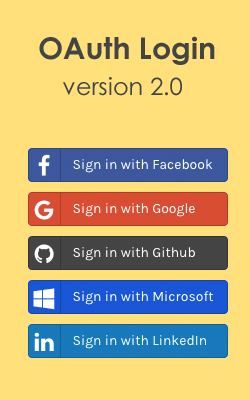This post about Twitter used jQuery plug-in JavaScript code in registration page username Availability check and update Screen name.
This is very useful stuff, this is the best way to implement it and the only thing you have to modify just some database connection parameters.

jQuery Plug-in :Download
Step1: Modifiy dbconnection.php
Change MySQL connection parameters in dbconnection.php
<?php
$mysql_hostname = "Host name";
$mysql_user = "UserName";
$mysql_password = "Password";
$mysql_database = "Database Name";
$prefix = "";
$bd = mysql_connect($mysql_hostname, $mysql_user, $mysql_password) or die("Could not connect database");
mysql_select_db($mysql_database, $bd) or die("Could not select database");
?>
$mysql_hostname = "Host name";
$mysql_user = "UserName";
$mysql_password = "Password";
$mysql_database = "Database Name";
$prefix = "";
$bd = mysql_connect($mysql_hostname, $mysql_user, $mysql_password) or die("Could not connect database");
mysql_select_db($mysql_database, $bd) or die("Could not select database");
?>
Step2: cofigure check.php
Change table name and column name in SQL query.
<?php
// This is a code to check the username from a mysql database table
if(isSet($_POST['username']))
{
$username = $_POST['username'];
include("dbconnection.php");
$sql_check = mysql_query("SELECT user FROM {$prefix}users WHERE user='$username'");
if(mysql_num_rows($sql_check))
{
echo '<span style="color: red;">The username <b>'.$username.'</b> is already in use.</span>';
}
else
{
echo 'OK';
}}
?>
Step 3. Add JQuery framework on your page
jQuery Plug-in :Download

Step 4. Registration.php Code
HTML code for this example is very simple:
<script src="js/jquery.js" type="text/javascript">/script>
<script type="text/javascript">
pic1 = new Image(16, 16);
pic1.src = "loader.gif";
$(document).ready(function(){
$("#username").change(function() {
var usr = $("#username").val();
if(usr.length >= 3)
{
$("#status").html('<img align="absmiddle" src="loader.gif" /> Checking availability...');
$.ajax({
type: "POST",
url: "check.php",
data: "username="+ usr,
success: function(msg){
$("#status").ajaxComplete(function(event, request, settings){
if(msg == 'OK')
{
$("#username").removeClass('object_error'); // if necessary
$("#username").addClass("object_ok");
$(this).html(' <img align="absmiddle" src="accepted.png" /> ');
}
else
{
$("#username").removeClass('object_ok'); // if necessary
$("#username").addClass("object_error");
$(this).html(msg);
}});}});}
else
{
$("#status").html('The username should have at least 3 characters.');
$("#username").removeClass('object_ok'); // if necessary
$("#username").addClass("object_error");
}});});
//-->
</script>
<div>
<label>User name:</label>
<input type="text" id="username" name="username" class="inn"/>
</div>
<div id="status"></div>
<script type="text/javascript">
pic1 = new Image(16, 16);
pic1.src = "loader.gif";
$(document).ready(function(){
$("#username").change(function() {
var usr = $("#username").val();
if(usr.length >= 3)
{
$("#status").html('<img align="absmiddle" src="loader.gif" /> Checking availability...');
$.ajax({
type: "POST",
url: "check.php",
data: "username="+ usr,
success: function(msg){
$("#status").ajaxComplete(function(event, request, settings){
if(msg == 'OK')
{
$("#username").removeClass('object_error'); // if necessary
$("#username").addClass("object_ok");
$(this).html(' <img align="absmiddle" src="accepted.png" /> ');
}
else
{
$("#username").removeClass('object_ok'); // if necessary
$("#username").addClass("object_error");
$(this).html(msg);
}});}});}
else
{
$("#status").html('The username should have at least 3 characters.');
$("#username").removeClass('object_ok'); // if necessary
$("#username").addClass("object_error");
}});});
//-->
</script>
<div>
<label>User name:</label>
<input type="text" id="username" name="username" class="inn"/>
</div>
<div id="status"></div>

 Download source code
Download source codeUpdate Screen Name

settings.js : enables jQuery functionalities
javascript code enables the jQuery functionalities.
var twitter=function()
{
var rtn={updateUrl:function(value){$("#username_url").html(value)},
screenNameKeyUp:function(){
jQuery("#user_screen_name").keyup(function(event){var screen_name=jQuery("#user_screen_name");
}
)
},return rtn}();
{
var rtn={updateUrl:function(value){$("#username_url").html(value)},
screenNameKeyUp:function(){
jQuery("#user_screen_name").keyup(function(event){var screen_name=jQuery("#user_screen_name");
}
)
},return rtn}();
Copy jquery.js and settings.js in js folder
Registration.php Final code
<html>
<head>
<script src="js/jquery.js" type="text/javascript">/script>
<script src="js/settings.js" type="text/javascript"></script>
<script type="text/javascript">
pic1 = new Image(16, 16);
pic1.src = "loader.gif";
$(document).ready(function(){
$("#username").change(function() {
var usr = $("#username").val();
if(usr.length >= 3)
{
$("#status").html('<img align="absmiddle" src="loader.gif" /> Checking availability...');
$.ajax({
type: "POST",
url: "check.php",
data: "username="+ usr,
success: function(msg){
$("#status").ajaxComplete(function(event, request, settings){
if(msg == 'OK')
{
$("#username").removeClass('object_error'); // if necessary
$("#username").addClass("object_ok");
$(this).html(' <img align="absmiddle" src="accepted.png" /> ');
}
else
{
$("#username").removeClass('object_ok'); // if necessary
$("#username").addClass("object_error");
$(this).html(msg);
}});}});}
else
{
$("#status").html('The username should have at least 3 characters.');
$("#username").removeClass('object_ok'); // if necessary
$("#username").addClass("object_error");
}});});
//-->
</script>
</head>
<body>
<div>
<label>User name:</label>
<input type="text" id="username" name="username" onkeyup="Twitter.updateUrl(this.value)" class="inn"/>
http://xyz.com/<span id="username_url" class="url">USERNAME</span>
</div>
<div id="status"></div>
<script type="text/javascript">
$( function () {
twitter.screenNameKeyUp();
$('#user_screen_name').focus();
});
</html>
<head>
<script src="js/jquery.js" type="text/javascript">/script>
<script src="js/settings.js" type="text/javascript"></script>
<script type="text/javascript">
pic1 = new Image(16, 16);
pic1.src = "loader.gif";
$(document).ready(function(){
$("#username").change(function() {
var usr = $("#username").val();
if(usr.length >= 3)
{
$("#status").html('<img align="absmiddle" src="loader.gif" /> Checking availability...');
$.ajax({
type: "POST",
url: "check.php",
data: "username="+ usr,
success: function(msg){
$("#status").ajaxComplete(function(event, request, settings){
if(msg == 'OK')
{
$("#username").removeClass('object_error'); // if necessary
$("#username").addClass("object_ok");
$(this).html(' <img align="absmiddle" src="accepted.png" /> ');
}
else
{
$("#username").removeClass('object_ok'); // if necessary
$("#username").addClass("object_error");
$(this).html(msg);
}});}});}
else
{
$("#status").html('The username should have at least 3 characters.');
$("#username").removeClass('object_ok'); // if necessary
$("#username").addClass("object_error");
}});});
//-->
</script>
</head>
<body>
<div>
<label>User name:</label>
<input type="text" id="username" name="username" onkeyup="Twitter.updateUrl(this.value)" class="inn"/>
http://xyz.com/<span id="username_url" class="url">USERNAME</span>
</div>
<div id="status"></div>
<script type="text/javascript">
$( function () {
twitter.screenNameKeyUp();
$('#user_screen_name').focus();
});
</script>
</body></html>
 Download source code
Download source codeVisual Database Desing with MySQL Workbench

 Nmap ("Network Mapper") is a free and open source (license) utility for network exploration or security auditing. Many systems and network administrators also find it useful for tasks such as network inventory, managing service upgrade schedules, and monitoring host or service uptime. Nmap uses raw IP packets in novel ways to determine what hosts are
Nmap ("Network Mapper") is a free and open source (license) utility for network exploration or security auditing. Many systems and network administrators also find it useful for tasks such as network inventory, managing service upgrade schedules, and monitoring host or service uptime. Nmap uses raw IP packets in novel ways to determine what hosts are Tor is a software project that helps you defend against traffic analysis, a form of network surveillance that threatens personal freedom and privacy, confidential business activities and relationships, and state security.
Tor is a software project that helps you defend against traffic analysis, a form of network surveillance that threatens personal freedom and privacy, confidential business activities and relationships, and state security.  Net Tools is a comprehensive set of host monitoring, network scanning, security, administration tools and much more, all with a highly intuitive user interface. It's an ideal tool for those who work in the network security, administration, training, internet forensics or law enforcement internet crimes fields. Net Tools is mainly written in Microsoft Visual Basic 6, Visual C++, Visual C# and Visual Studio .NET.
Net Tools is a comprehensive set of host monitoring, network scanning, security, administration tools and much more, all with a highly intuitive user interface. It's an ideal tool for those who work in the network security, administration, training, internet forensics or law enforcement internet crimes fields. Net Tools is mainly written in Microsoft Visual Basic 6, Visual C++, Visual C# and Visual Studio .NET. A flash hacking alternative to variable editing and cheat engine, you can change values saved by the game in a “.sol” file. You will find the .SOL files in x:\Documents and Settings\[account-name]\Application Data\Macromedia\Flash Player\#SharedObjects\ followed by the name of the website. If the game was running from your computer, the .SOL will be in the “localhost” folder. Replace ‘x’ with your main drive, the one with your OS, and the account-name with the currently logged in user.
A flash hacking alternative to variable editing and cheat engine, you can change values saved by the game in a “.sol” file. You will find the .SOL files in x:\Documents and Settings\[account-name]\Application Data\Macromedia\Flash Player\#SharedObjects\ followed by the name of the website. If the game was running from your computer, the .SOL will be in the “localhost” folder. Replace ‘x’ with your main drive, the one with your OS, and the account-name with the currently logged in user. Cain & Abel is a password recovery tool for Microsoft Operating Systems. It allows easy recovery of various kind of passwords by sniffing the network, cracking encrypted passwords using Dictionary, Brute-Force and Cryptanalysis attacks, recording VoIP conversations, decoding scrambled passwords, recovering wireless network keys, revealing password boxes, uncovering cached passwords and analyzing routing protocols. The program does not exploit any software
Cain & Abel is a password recovery tool for Microsoft Operating Systems. It allows easy recovery of various kind of passwords by sniffing the network, cracking encrypted passwords using Dictionary, Brute-Force and Cryptanalysis attacks, recording VoIP conversations, decoding scrambled passwords, recovering wireless network keys, revealing password boxes, uncovering cached passwords and analyzing routing protocols. The program does not exploit any software Network protocol analyzer for Windows and Unix that allows examination of data from a live network, or from a capture file on disk
Network protocol analyzer for Windows and Unix that allows examination of data from a live network, or from a capture file on disk Nikto is an Open Source (GPL) web server scanner which performs comprehensive tests against web servers for multiple items, including over 3300 potentially dangerous files/CGIs, versions on over 625 servers, and version specific problems on over 230 servers. Scan items and plugins are frequently updated and can be automatically updated (if desired).
Nikto is an Open Source (GPL) web server scanner which performs comprehensive tests against web servers for multiple items, including over 3300 potentially dangerous files/CGIs, versions on over 625 servers, and version specific problems on over 230 servers. Scan items and plugins are frequently updated and can be automatically updated (if desired). DollarDNS Whois Direct allows users to make advanced WHOIS queries against a domain, including raw queries
DollarDNS Whois Direct allows users to make advanced WHOIS queries against a domain, including raw queries  Firebug integrates with Firefox to put a wealth of web development tools at your fingertips while you browse. You can edit, debug, and monitor CSS, HTML, JavaScript, and network activity live in any web page.
Firebug integrates with Firefox to put a wealth of web development tools at your fingertips while you browse. You can edit, debug, and monitor CSS, HTML, JavaScript, and network activity live in any web page. Use tamperdata to view and modify HTTP/HTTPS headers and post parameters...
Use tamperdata to view and modify HTTP/HTTPS headers and post parameters...  Cookie Editor that allows you add and edit "session" and saved...
Cookie Editor that allows you add and edit "session" and saved... 















